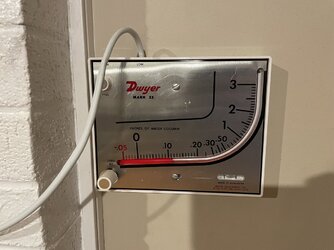kennyp2339
Minister of Fire
Thats about were my princess free standing stove closes, between noon and 1 o'clock, my sweet spot for burning is around 3 o'clock.I recently had a BK Sirocco insert installed. I have a question regarding the thermostat which seems to have a lot of unnecessary play. Is it supposed to go from 6 o’clock position (wide open) almost all the way around back to 6 o’clock? I do believe I hear the thermostat shut around the 1 o’clock position (where the smaller side of the swoosh is)


